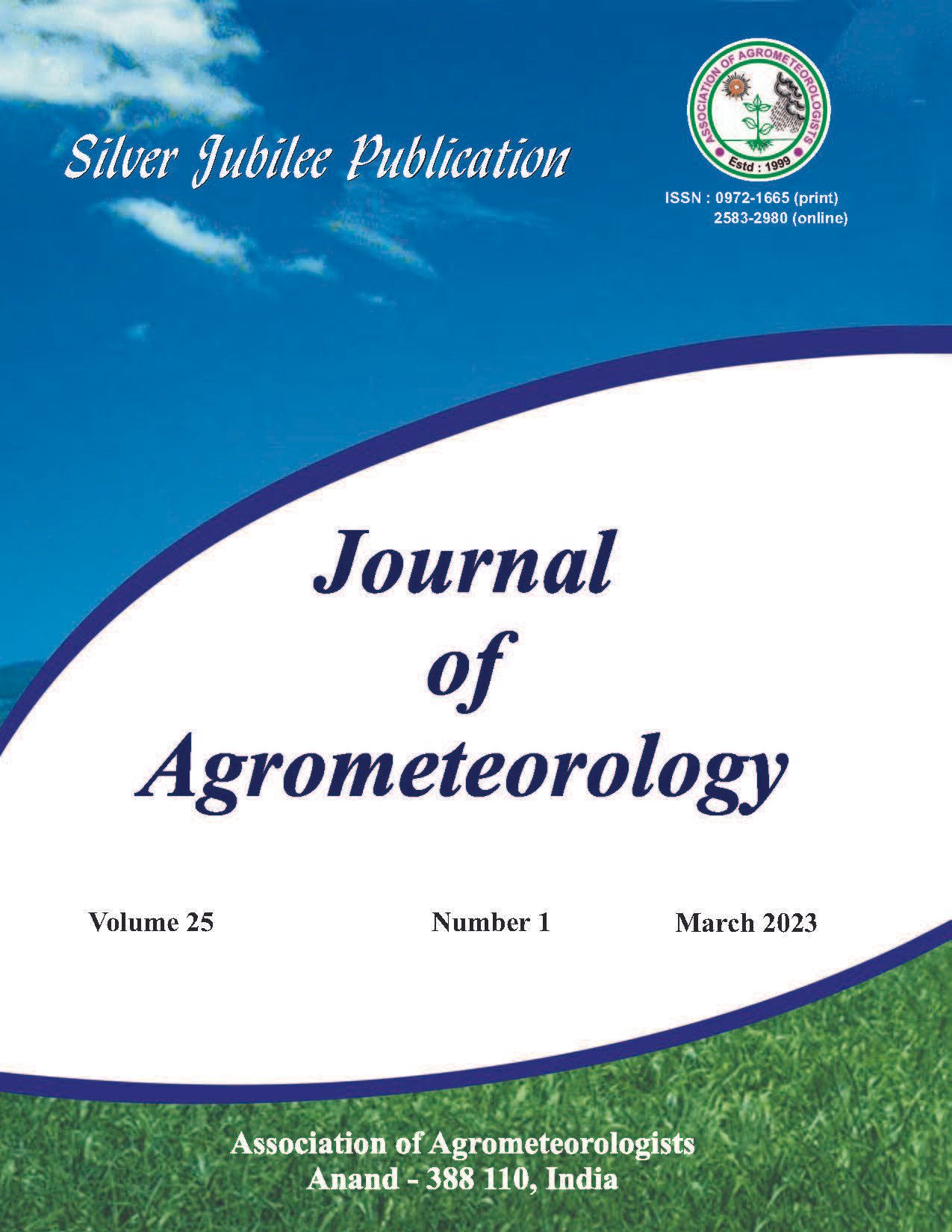Influence of protective forest belts on snow accumulation in agricultural landscapes
DOI:
https://doi.org/10.54386/jam.v25i1.2038Keywords:
forest belt, snow accumulation, snow reserves, snow density, arid climateAbstract
In semi-arid climate conditions, where farming is complicated by a lack of atmospheric moisture, the preservation of snow in an agroforest landscape serves as an additional source of moisture for the growth and development of tree and shrub vegetation. The paper investigates the role of forest belts of a combined structure on the characteristics of snow deposition depending on different patterns of shrub placement (along the top edge, along the lower edge, on both sides). The results of the conducted snow surveys show that experimental sites with shrubs along the top edge are characterized by the highest level of snow accumulation both in the forest belt and in the adjacent field. The snow-retaining function in the forest belt zone is weaker in the presence of shrubs on both sides. It has been established that the values of snow density increase with approaching the forest stand. The highest values were recorded in the forest belt with shrubs along the top edge (up to 0.5 g cm-3). The accumulation of snow and its density eventually affected the amount of snow reserves. The highest values of snow reserves were observed in the forest belt with shrubs along the top edge with a row width of up to 1 m. This contributed to the accumulation of 82-203 mm of snow in the forest belt area (at 43 mm of snowfall). Shrub placement along the lower edge provoked a loss of moisture in the forest belt itself, which made this pattern ineffective. The results obtained can be applied in the design of protective forest belts in the areas with insufficient moisture.
Downloads
Published
How to Cite
Issue
Section
License
Copyright (c) 2023 ANASTASIA KULIK, OLEG GORDIENKO, MAXIM SHAIFULLIN

This work is licensed under a Creative Commons Attribution-NonCommercial-ShareAlike 4.0 International License.
This is a human-readable summary of (and not a substitute for) the license. Disclaimer.
You are free to:
Share — copy and redistribute the material in any medium or format
Adapt — remix, transform, and build upon the material
The licensor cannot revoke these freedoms as long as you follow the license terms.
Under the following terms:
Attribution — You must give appropriate credit, provide a link to the license, and indicate if changes were made. You may do so in any reasonable manner, but not in any way that suggests the licensor endorses you or your use.
NonCommercial — You may not use the material for commercial purposes.
ShareAlike — If you remix, transform, or build upon the material, you must distribute your contributions under the same license as the original.
No additional restrictions — You may not apply legal terms or technological measures that legally restrict others from doing anything the license permits.
Notices:
You do not have to comply with the license for elements of the material in the public domain or where your use is permitted by an applicable exception or limitation.
No warranties are given. The license may not give you all of the permissions necessary for your intended use. For example, other rights such as publicity, privacy, or moral rights may limit how you use the material.





